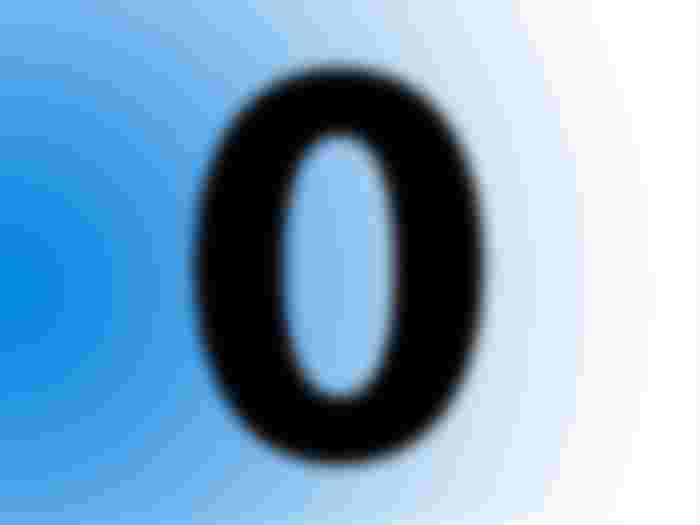Zero is a number that indicates the absence of any quantity and that forms the boundary between positive and negative numbers, denoted by the digit 0. Zero is an even number and the only real number that is neither positive nor negative. It is a neutral element in addition and subtraction. Since the number zero is the cardinality of an empty set, depending on the definition, it complements the set of natural numbers (when zero is added to the set of natural numbers N, an extended set is obtained, which is denoted by N0). In the set of integers, zero is followed by minus one (−1) and the predecessor is number one (1). The name comes from the Latin word nullus, which means "none, nothing".

Zero has not always been considered a number. At the beginning, it did not appear as a numerical value, but as a digit, as a consequence of the appearance of positional number systems. Unlike, for example, ancient Rome (and Roman numerals), some of the ancient civilizations used positional number systems, in which the position of each digit determines the numerical value assigned to it. Thus, in Babylon, the positional number system with base 60 has been used since the 19th century BC. e., the Maya used a positional system with a base of 20, while in India a decadal system with ten digits was used. Although the concept of zero as a number was not initially known, all of these cultures eventually developed a way of using zero as a number. Namely, without zero as a number, it is not possible to distinguish, for example, the numbers 11 and 101. The Babylonians left this difference for a thousand years to the context in which the number was used, before introducing the mark for an empty position - two upper commas. Over time, the Maya began to mark the empty position with the shell symbol, while in the Indian number system, the forerunner of today's decadal system, the empty position began to be marked with a sign similar to today's zero.
Going from zero as a digit to zero as a number was not easy. Numbers have developed as a way of marking the quantity of a set of objects. The question was what to count if there were no items. And what, in that context, negative numbers should represent. It was not until 650 that the Indians began to develop the concept of zero as a number. Thus, descriptions of the interaction of zero (and negative numbers) with other numbers can be found in the writings of the Indian mathematicians Brahmagupta, Mahavira, and Baskar through the operations of addition, subtraction, multiplication, and division. Considerations of the problem of division with zero, as well as the first discussions on the mathematical concept of infinity, should be singled out as an exceptional achievement.
In the twelfth and thirteenth centuries, the Indian conception of the number system and zero as a number spread west to the Arab countries, but also to the east, to China, where they further expanded their knowledge of operations with zero and negative numbers. Through Arabic translations and writings, zero is finally coming to Europe. Fibonacci introduced it to Western civilization with the book Liber abaci ("The Book of Computing"), which contains a bold Eastern idea - that nothing can be counted. Leonardo of Pisa, remembered in mathematical history as Fibonacci, presented in 1202 a completely new view of numbers. Namely, in his book, he presented a new decimal system for writing numbers using ten symbols, which are called digits. Fibonacci came to the new number system by studying Persian manuscripts and called it modus indorum (Indian method), although today it is commonly called Arabic. With it, single-digit and multi-digit Arabic numbers appeared for the first time in Europe, which will eventually displace the numbers written in Roman numerals. In addition to the nine Arabic numerals, the tenth, zero, which is marked with a circle, also entered mathematics at that time. Zero thus first appeared in the West as a number preceding one. Before that, in calculations using Roman numerals, zero appeared as zero for centuries, which meant "nothing", but it was not considered a number and was written as a word.
In the East, zero has been a common thing for centuries. Indian mathematicians knew about it in the 7th century, and the idea was taken over by the Persian mathematician Muhammad al-Khorezmi in the 9th century. However, Fibonacci did not have enough courage to treat zero in the same way as other numbers. It took a long time for Western civilization to accept zero as both a number and a number. As much as three hundred years after Fibonacci's book, the Italian mathematician Girolamo Cardano solves the cubic equation without the use of zero, and the concept of zero and negative numbers enters European mathematics slowly and with great resistance.

Sus a nice article